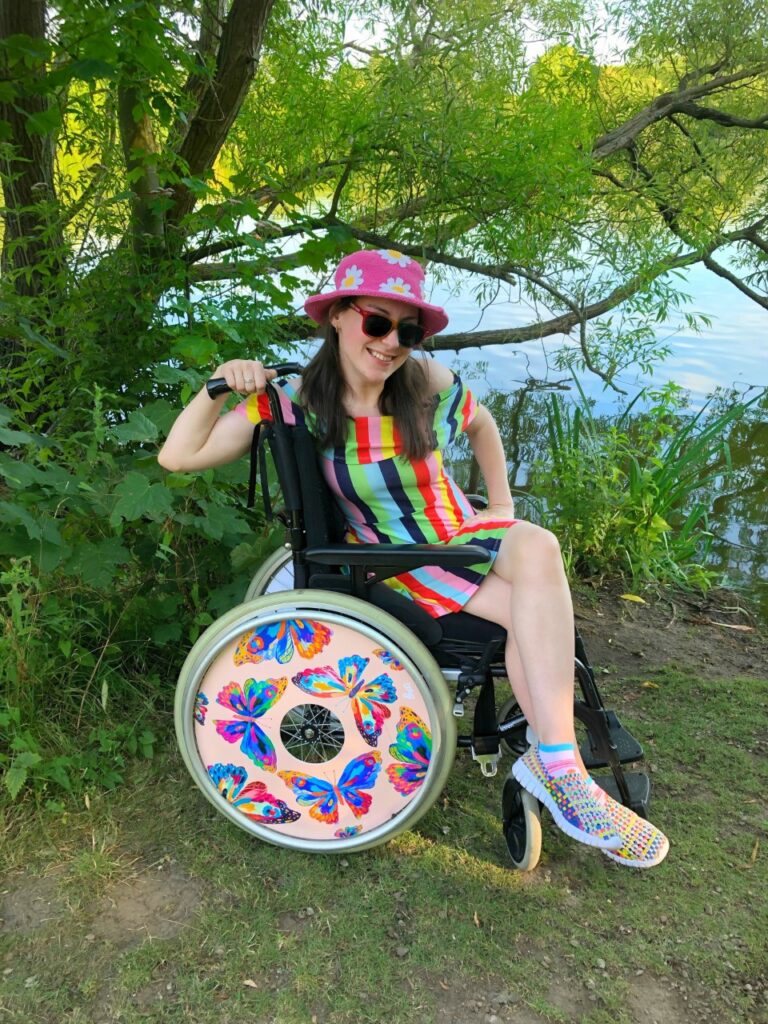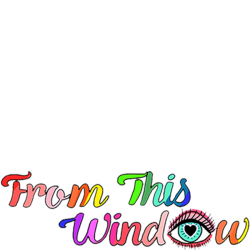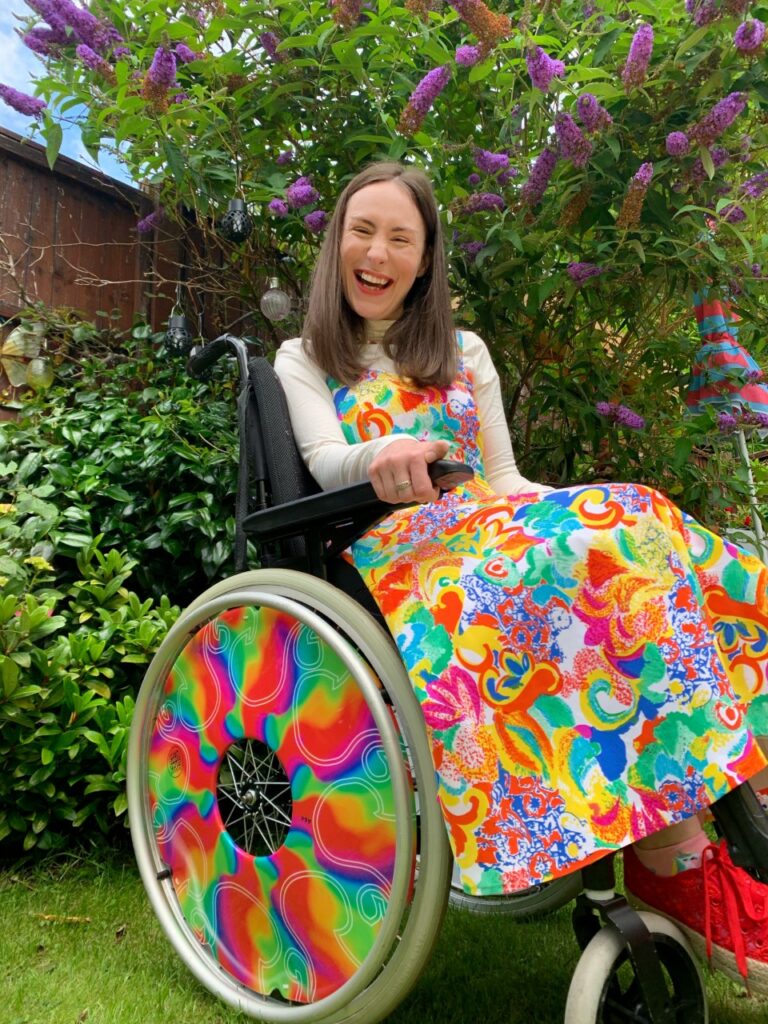
Dear Readers,
I rest confidently in my disabled identity, it’s a part of me. It’s at the core of who I am. I love the community- how we can relate to each other, the similar threads that holds us together that tells us that we’re not alone-. I love the creative innovation within disabled individuals, which enables them and then the rest of us to access, enjoy and explore the world, I love the disabled joy that comes with and from this. This all equals my Disability Pride. Though there’s another part that doesn’t always seem that to fit this description, on the surface, yet I know that it is a key part.
I tend sometimes to have an all or nothing approach to certain things-when something good is happening and something occurs that throws me off track, my mind, my energy, my mood is redirected and I can’t seem to find my groove and a balance (though with my Cerebral Palsy and coordination being my number one difficulty, it’s not that much of a puzzle as to why I find this hard!). So, when my disability is showing an unwelcoming face, I feel like a fraud when I’ve said I’m disabled and proud.
Feeling like I’ve failed as a proud disabled person can look like when my body is a few steps behind where I think I should be, going slower than I would like, or when I wish I could to seemingly simple tasks like putting in my own earrings or when something is inaccessible, wanting my access needs to evaporate. I talk myself out of identifying as the person who claimed that she was disabled and proud. How can I be when I have such thoughts? I think.
To be disabled is often thought to be awful, tragic, a life sentence. It’s in those passing comments, it’s in the swarm of accolades others think you deserve just for existing. It’s in people’s inability to understand that you go about your day in a not-so different way to a non-disabled person, just with a few adaptations. It’s in how the media portrays disabled people using those demeaning expressions such as “In spite of their disability” or “Beating the odds” or “Their disabled but” and how we are represented in films. The associations that are made with the word disabled then, to non-disabled people and to some disabled people can make it seem illogical as to why someone would have pride with their disabledness. Surely with my above feelings of being woeful about certain parts of my disability, I am playing into this narrative?
This is another thing that can be thrown into the mix of Disability Pride. This term can feel so radical and for those who believes that disability is still a taboo subject (though it never was), this is perhaps too radical. This opinion can get trickled down to those of us who are disabled and proud, making us question our identity and we feed on naysayers’ words. When I have done this, I hear the familiar knock of the sound of failure at my door, telling me that I am again falling short when I have said what I’m disabled and proud. It feels like I have wriggled out of this proud skin, no longer feeling the person sitting confidently in her wheelchair, with her arms outstretched or demonstrating a sassy pose that screams “This is me.”
Though I am beginning to learn that rather than disability pride being a fixed state, it is fluid and covers a spectrum. And when thinking of it isn’t this term all about recognizing and taking stock of all of the complexities that are in our lives as well as reveling in all the blissful moments?
So, when I’m in a reflective mood and I feel myself wondering down a path that doesn’t spark joy, instead of thinking that I’m a disabled and proud fraudster, I will try to think right now I am at a different stage of my pride and that’s okay.
If you have had, or are having a hard time with your disability pride, please know that this isn’t you failing. Disability Pride is so much more than just inhaling all what’s good
All my love XX




